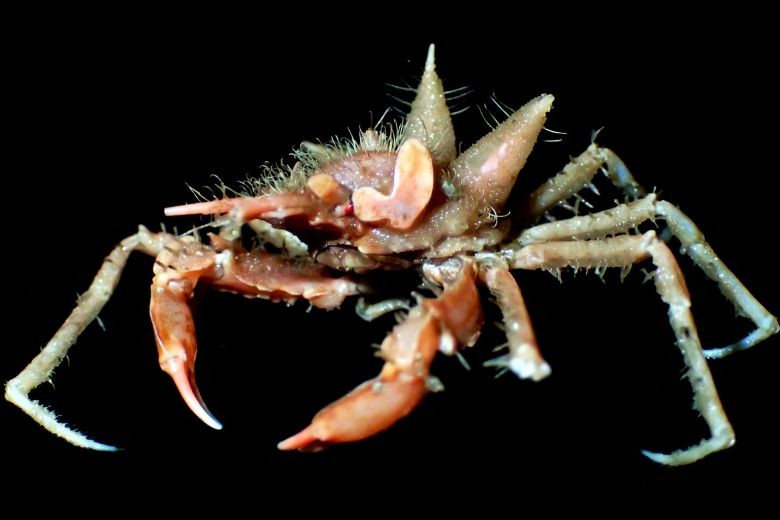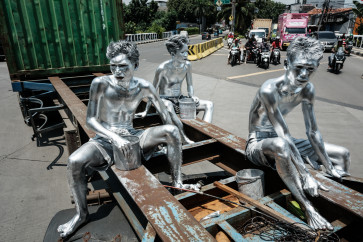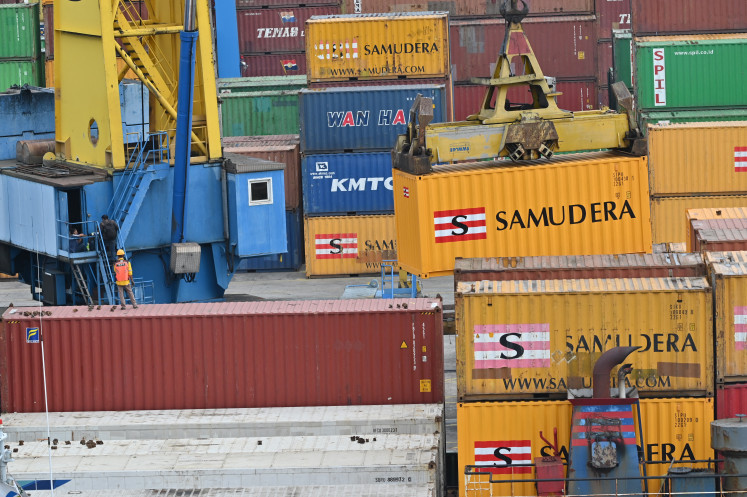Found: Over 12 new crustacean species
Researchers from Singapore and Indonesia discovered a dozen new species of crustaceans while trawling the depths of the sea.
Change text size
Gift Premium Articles
to Anyone
 The peculiar spider crab dubbed Big Ears had not been seen for some 10 million years till researchers found it in the Sunda Strait last month. (The Straits Times/SJADES2018)
The peculiar spider crab dubbed Big Ears had not been seen for some 10 million years till researchers found it in the Sunda Strait last month. (The Straits Times/SJADES2018)
H
idden over 1,000-meter underwater along the Sunda Strait off the coast of Jakarta is a peculiar spider crab with plates resembling ears that actually protect its eyes.
It had not been seen for some 10 million years, until researchers from Singapore and Indonesia discovered it while trawling the depths of the sea last month.
Researchers believe the 6-centimeter-wide crab, dubbed "Big Ears", is from the Rochinia genus.
More than a dozen new species of crustaceans were discovered on the pioneering expedition into the deep waters off the southern coast of West Java.
They also included a distinctive new species of Paguristes hermit crab that has green eyes and orange banded pincers, squat lobsters with a distinctive zebra pattern on their bodies, and shiny-eyed shrimps that possess unique mechanisms to lock their abdomens to protect themselves against predators.
In total, some 800 species from more than 200 families of sponges, jellyfish, molluscs, starfish, urchins, worms, crabs, prawns and fish were discovered, accounting for more than 12,000 individual animals.
Peter Ng, head of the Lee Kong Chian Natural History Museum at the National University of Singapore, and Dwi Listyo Rahayu, senior research scientist at the Research Center for Oceanography of the Indonesian Institute of Sciences (LIPI), led the 31-member team on the 14-day trawling expedition.
The team gave a showcase of their findings to the media on Tuesday at the Lee Kong Chian Natural History Museum.
They sailed from Jakarta to the Sunda Strait, and waters off the Indonesian port of Cilacap, in the southern part of Central Java.
Using trawls, dredges and other devices capable of capturing creatures even a few millimeters long, the team collected samples from 63 stations, at depths of between 500m and 2,000m under the sea.
Rahayu said trash was a problem. Only five to six stations were able to trawl the sea without picking up rubbish.
But there was treasure in the trash. One of the hermit crabs was found hidden in discarded underwear.
"How rubbish affects the creatures, we still do not know. But ocean plastic is a huge problem," said Ng.
The expedition was not without problems. One of the nets snared something heavy underwater which could have caused the cable to snap.
If that had happened, there was a real chance that the flaying cable would have cut someone on board the ship.
But the captain stopped the ship instead of using force to disentangle the net, which Ng said is something to learn for future expeditions.
He said: "On the research front, our teams learnt a lot about how to conduct deep-sea science, handle the various equipment needed for such work, and had the opportunity to sample and examine a multitude of fantastic deep-sea animals."
The samples will be studied, and the findings will be shared and discussed at a workshop slated to be held in Indonesia in 2020, and later published in The Raffles Bulletin of Zoology.
Rahayu said the Indonesian scientists were exposed to new scientific techniques and methodologies through interactions with scientists from other nations.
"Hopefully, such knowledge transfer and collaboration would build stronger and more resilient ties between our two nations," she said.
This article appeared on The Straits Times newspaper website, which is a member of Asia News Network and a media partner of The Jakarta Post









